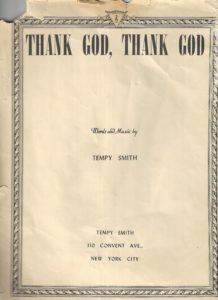
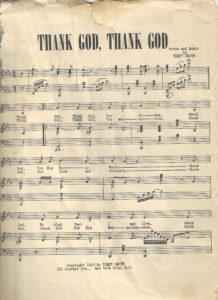
Storytelling for Women and Multicultural Communities
#JimCrowed is when Black people are exploited by old, racist Jim Crow laws today. If you are Black and your land was stolen, you were #JimCrowed. If you are Black and your right to the truth is denied, you’ve been #JimCrowed. In honor of Black History Month, this special edition looks at an instance of Jim Crow and Black land ownership. Guest writer William T. Butler Jr., talks about challenges to his family’s North Carolina land.
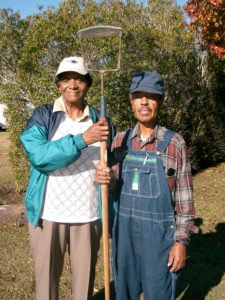
Jim Crowed, By William T. Butler Jr.
We have all experienced at least one “Jim Crow” incident in our lives, one that left us thinking: “This is what our fore parents had to put up with.” One of those moments, happened to me recently when the Columbus County North Carolina Office of Taxation, decided to give away my grandparent’s rural homestead. Located in a part of coastal North Carolina, Ransom Township, the relatively small parcel of land had no liens, no unpaid taxes, and was not for sale. One day in 2018, it mysteriously disappeared off the books of Columbus County North Carolina Office of Taxation.
After the Great Depression
It might surprise you to learn how or why this could happen. First, let me tell you something about my late father, William T. Butler Sr. aka “Bud,” a family man and patriot living in the rural Cape Fear Region, by Lake Waccamaw, North Carolina in the late 1930s. After the Great Depression, he dropped out of North Carolina Agriculture and Technical State University to work at the local lumber mill to help support his parents and younger siblings. When World War II broke out, he enlisted in the Army to earn more money.
During his tour of duty, he served in combat with distinction in every major theater of battle from the Normandy Invasion to the liberation of Nazi concentration camps in Eastern Europe. Before leaving home, he had promised his siblings and parents to keep them safe and fed at home. Back again from Europe, my grandfather urged my father, to move up North, for the safety of his young family, wife, Vivian, and their first child, David, my older brother. When my father was a child, one of his mother’s nephews had been lynched by a white mob in their hometown. After returning home from the war, wearing his uniform decorated with valor medals, another cousin was lynched. The KKK White Supremacists had declared war on Black veterans!
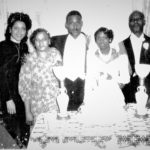
Never missed a payment
So, my father settled in Brooklyn, New York in 1950 where I was born followed by my younger sisters, Valarie, and Aliya. My father continued to financially support his sisters, until they were each married and his parents until their deaths, all while he lived far from them in Brooklyn. Among the many things that my father drilled into our heads was his mantra: “Always pay your property taxes! It’s key to owning your land.” So, 53 years later, when named, Executor of his estate in 2003, I automatically and religiously paid the annual taxes on all our North Carolina properties. I never missed a payment.
It took me nearly ten years to settle the books before I could begin to focus on the old family homestead. One day I had the idea to find pictures of the old homestead online at Terraserver.com. I called the Columbus County North Carolina Office of Taxation because this required some very specific information: 1.) Associated Coordinates X (easting) and Y (northing); 2.) Location (RANSOM TWSP); 3.) Land Parcel Property No. (27875); 4.) Account No. (15-08080); and 5.) Patience. Handling local real estate transactions and paying Columbus County tax bills, I spoke with office staffers at least twice every year for the past for 17 years. Some of the personnel would recognize me and comment on my “out of town” voice.
Deed in my hand
When I called recently, I held a copy of our old homestead deed in my hand. The person on the other end of the phone said: “There’s no deed on file matching your inquiry.” I responded: “There must be a mistake. I have the deed in my hand. Better check again.” After a long hold, the representative came back to inform me that deed is now listed as owned by a couple living on Silverspoon Road, Tatum Township, North Carolina. Shocked, I had three questions: 1. How and when did they get ownership of my land? 2. What are the rules regarding conflicting tax collection? 3. What about refunds with compounded interest and penalties?
I exhaled for one moment
After another long hold, the voice on the other end of the phone said: “We’ve found the original deed registered by your grandparent’s in 1922.” I exhaled for one moment. But there were some problems, of course: 1. The original parcel demarcation is no longer discernible. An accurate calculation cannot be made. 2. I must submit newly updated deed at my expense. A new deed registry requires: a. Land Survey to calibrate exact property line coordinates. b. I will need to complete a new filing of an up-to-date deed with Columbus County Office of Taxation, and c. registration requires hiring a North Carolina licensed real estate law firm. The proposed alternative solution was to close the existing tax account. No refund was allowed.
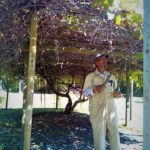
Black farmers and landowners
I took my complaint to the North Carolina Land Loss Prevention Project (LLPP) and they agreed to represent my case. Founded in 1982 by the North Carolina Association of Black Lawyers, this organization provides legal support and assistance to financially distressed and limited resource Black farmers and landowners in North Carolina.
Why share this story with you? Maybe you know something about my family, this part of North Carolina, and how land was measured and demarcated in the old days. If so, you may be able to help. Please share your collective old family memories, memorabilia, source materials, photos, and old stories. Your old photographs, letters or treasured memories may contain a missing piece to this family puzzle. I am asking you to help us save our land. Talk with the family elders, tell them what we are trying to accomplish. Get the word out across the country to family members, friends, neighbors, and allies.
Large family network
My initial target audience for this story was my large family network, especially those descended from one Jane Webb, born free in colonial era Northampton County Virginia in 1699. She was the first person of color to take a slave owner to court in an effort to free her family. Actual court records tell a fascinating story of this woman who took on the slavery system in colonial courts for ten years until finally reaching Virginia’s Supreme Court. She stood defiant, even public lashings, harassment, humiliations, and threat of death didn’t deter her. I believe my story should be important to everyone. This is a focus on hard-earned Black land ownership and how we have lost untold acres of land over the last century through tricky rules. Perhaps this happened to you! I want people to know, to feel, to believe that this land theft is happening now in 2019!
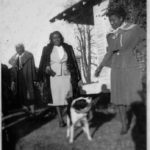
A Huckleberry Finn movie
Back in the old days, homes in rural America really didn’t have addresses. Perhaps this is hard to believe but I witnessed this personally as a child. Anyone that says different just doesn’t know what he or she is talking about. I can remember when there were no streetlights, signs, paved roads, and house numbers. Most children ran around barefoot all summer. For me, it was like visiting a Huckleberry Finn movie every summer. Rural and urban people live very different lives. I once asked why there were no street signs or house numbers and the simple answer was: “Everybody knows where everybody lives.” Land demarcations and measurements simply identified deed title. That old pre-computerize recording system made possible what has happened in my case and has been used to rob lands from countless other people.
Needle in a haystack
In North Carolina, our land is a relatively small parcel surrounded in every direction by thousands of miles of vast lands both wooded and rural within a huge state. The difficulty of finding it is greater than searching for a needle in a haystack. The archaic recording process makes it even harder. I believe this is by design, no accident. Over time thousands of small parcels began to comprise vast large parcels in the hands of large land developers. Today, the old Klan methods of violence are wasteful and inefficient. Control of information is the more powerful way Jim Crow laws are employed–silent, cost-effective and far more permanent.
The really crazy thing
I don’t know how those names got on a new deed for my property. The Land Loss Prevention Project will handle it. I know I didn’t sell any land to those people. I think my unexpected call prematurely threw a wrench into their game. The calm way I responded was unexpected. I will not say that the whole town was in on it. But everyone knows that this has gone on for generations. The really crazy thing is everyone born and raised in this part of North Carolina are all related to each other whether they are Black, Indigenous, or White! One way or another all these people have their neighbor’s blood on their hands and running through their veins. And the lynchings that have been documented will never equal those that are still unknown.
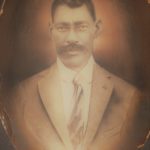
For you genealogists out there
Think about this story if you are descendants of Jane Webb who are spread near and far across this country and around the world. For you genealogists out there, the family names are: Willie Moseley, Ellen J. Moseley, Christian Webb, Henry Butler, Mary L. Butler (direct descendent of Jane Webb), Walter Mosley, and John Knowles. If you recognize any of these name(s) from your own family history research, please share. I can talk to you about my grandparents and their farm, as I regularly visited them for over sixty years. My deed description states “chain and stakes” measurements. I’m looking for equivalency of 1922 measurement to measurements used today.
This has truly been a learning experience for me. My lovely niece, Atiya Butler, my late brother David’s daughter, is our family historian and genealogist. Her dedication and insights fueled my deeper journey into our family history. My ancestors brought me thus far and likely the reason that I have no fear or doubt of a positive outcome. We can prove that it is possible to unite for the good of all. Let’s deny wrongful takers what they would take. Once this case is resolved, I’d like to invite everyone to stand with us by a plaque on our land that states simply: “The hardest challenges are the simple ones only you can accomplish.”
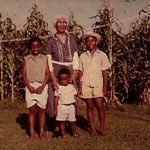
About the author: William T. Butler Jr. aka, Tommie, is a Brooklyn writer, gardener and stage production guru living in Atlanta, Ga.
Black families, Who’s minding your land down South? Do you know anyone whose land was sold from under them, without their knowledge? Please share your comments.
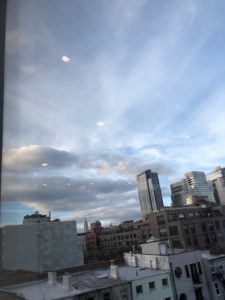
Having a clean slate is the beauty of a New Year. The slate has been wiped clean of last year’s junk. A clean, new day has dawned. I spent the first day of the New Year immersed in art at a friend’s housewarming party in Brooklyn. The bright sky made me reflect. I used to sit on my stoop, look at the sky and dream of flying away. I did move away for 30 years. But I came back. I’m thrilled that Brooklyn’s still here in all its quirky glory. But Brooklyn has changed. It’s now a brand. What new changes does this New Year hold for you? Will you: Be the change you want to see, a wise person once advised?—(not Gandhi)
Word of the year #WOTY – I chose ‘hope’ as my word because I’m always hopeful. According to Merriam-Webster dictionary the word ‘hope’ means: “to cherish a desire with anticipation: to want something to happen or be true.”
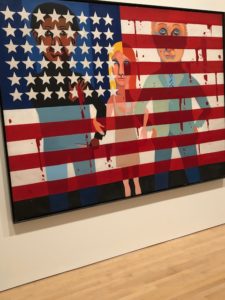
The past year held setbacks and challenges for many. I believe that life is about learning and being active. People of color, especially Black Americans, still face incredible hardships–racism and exploitation. We overcame unbelievable obstacles because we are America’s activists. Yes, we are losing hard-fought ground. But we are still fighting. More on how some black families are losing and holding their ground, land and properties, in a future edition.
Karma- It seems that we are gaining and losing all the time. Happily, we re-gained a little power in politics, culture, and the arts. From a review of some of my 2018 photographs, film, art, and theater remained an important focus for me. Some of my white friends were shocked by social media posts of how bad things are for Blacks and Latino/a/s in America. Thankfully, they are waking up about the harms of racism and slavery that are so prevalent today. I’m glad that America’s future no longer looks white, old, and male. The browning of America is real. Karma is a bitch.
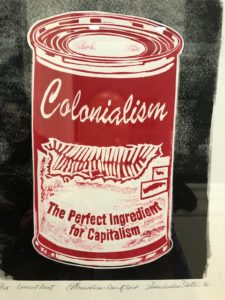
We saw oldsters and youngsters of all backgrounds marching for fairness and justice. I personally participated in more marches during 2016-2018 than I have in years! We agitated for women’s rights, peace, immigration, and fair wages.
#Ageism – I will be protesting more in 2019–especially about racism, sexism and ageism. Speaking of age, my 1970s sisters and brothers held a black alums reunion that was the bomb! Over 200 black alums from multiple generations attended in Washington DC. To see me and my ’70s classmates and others in photographs from the Black Alums of Smith and Amherst College, click here.
My mother once told me: “All women of color in America are political, whether they realize it or not is important.” Being a WOC (woman of color) who is 60+ years old, I definitely feel her.
Being #political
Some political candidates for governor that I supported did not win—Cynthia Nixon, New York; Stacey Abrams, Georgia; Ben Jealous, Maryland; and Andrew Gilliam, Florida. But, I’m still hopeful.
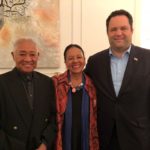

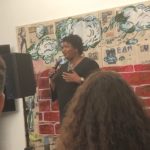
To see me and others from our Women of Color and Allies for Cynthia Nixon event, click here.
To see our political organizing hub page for Cynthia Nixon, click here.
The recent Midterm elections provided the most hope. Washington’s newly elected officials may be the most diverse in history with forty-two women sworn into Congress this year. Twenty-four women of color comprise the freshman class. This year (2019) opened with a clear shift for women’s political power.
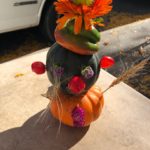
On hope
Choosing a word of the year #WOTY was new for me. I decided to do it because it’s supposed to help guide your thinking, especially when life gets cluttered. Thinking about your word should make life easier and more flexible. Instead of feeling guilty about a New Year’s resolution, your word is supposed to help you adjust your goals and plans anytime. We shall see.
Actually, ‘hope’ was always my word. Certainly my gardening and creative media projects started with hopes and intentions. But ‘hope’ is a legacy word for me. I believe my ancestors, who migrated and immigrated, handed this word down to me from their ancestors in China, Africa, Mississippi, Louisiana, Trinidad, Guyana, and Venezuela. Because of them, we can, and still do. No one knows what will happen in the future. But we always have hope!

Whatever paths we take let’s hope that we will continue to eat more plants (less meat and fish), honor our ancestors, be the artists that we were born to be, and build community with all people of good will. This year, Madame Tempy, a radio drama with BBC Radio about my paternal grandmother, is coming to life at this writing. Auntyland, my new media tech platform is back on track.
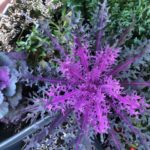
Stay tuned for more posts from this blog space. What will you create with your clean slate this year! Maybe new pathways, gardens and some great pies! Do you have a word of the year 2019?
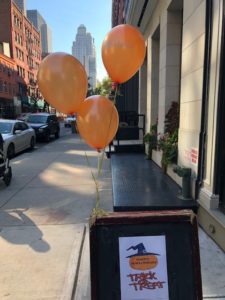
Transformation is the spirit of autumn. Everywhere you look there is change. While Autumn has its own unique colors I’m excited to move on. It’s time to fall back to Eastern Standard Time and vote.
And speaking of falling back, here’s an excerpt from my past blog post on some seasonal rituals that I fall back on during this time of the year:
“Do you have Autumn rituals? I do. It’s about accepting change in mind, body and soul. Nature changes with each new season. So must we. I believe that we all follow seasonal rituals whether conscious or unconscious that were passed down or learned along the way. I wonder what could be in an autumn ‘tool kit’? What do we need to do to open our hearts for this new season? What do you do to indulge your senses with sights, sounds, and scents of Autumn?”
Click here to read about my Autumn season rituals.
Yes, it’s been awhile since my last post. Here are some highlights:

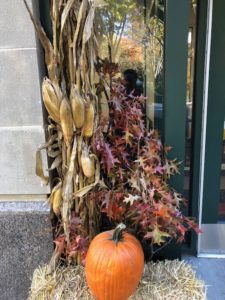
Vegetables and flowers are still growing on my New York City roof. But the big surprises from my urban roof garden were the beans, squash and corn, a nod to my Native ancestors’ ‘Three-Sister Garden’ tradition. It was an experiment to grow corn. Actually, life as an urban gardener is a total experiment and an amazing journey.
Winona LaDuke, noted Native American environmentalist, political activist who keynoted the Community Food Systems Conference in Boston that I attended in 2017, inspired me. She recounted a story about a cousin who grew corn in a wooden crate. I copied what she said he did. It worked!
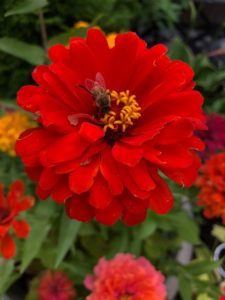
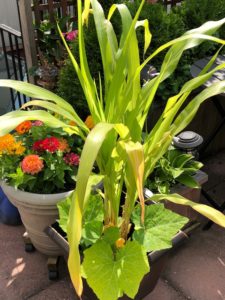
Mostly though, LaDuke’s message stayed with me. It was a message I heard before: “Listen to our ancestor’s. Prepare for the next seven generations. Protect and care for Mother Earth. Stop this culture of consumption! It’s totally not sustainable!”
And speaking about consumption—what are we consuming? A lot of bad news! My remedy is to unplug from social media. Once I’m unplugged, I become more intentional about caring for others and myself. It happened organically.
Gardening is my mindfulness meditation. But I did not know it when I first started. By caring for my garden, I noticed that I felt calm and connected.
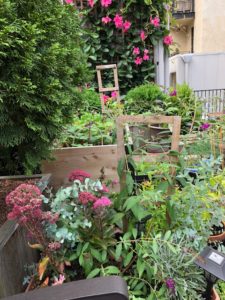
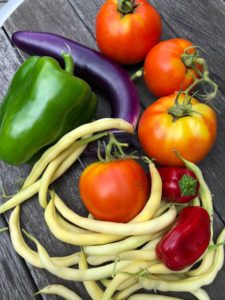
My gardening experiences were very transformative for me. As a city girl, to intentionally plant a seed, hand-mix the soil, nurture and witness growth and reap a harvest—all of these gardening stages changed me. Like magic, I felt strong. I began to feel more strength between my mind, body and soul connections. Slowly, I began to reclaim artistic parts of me that I had neglected. Sometimes, I know I am channeling my ancestors.
What are your autumn transformation reflections?
Memorial Day weekend is when I wake up my garden on the roof. That’s where I channel my farming ancestors. I plant vegetable seedlings that germinated in my kitchen. I decorate my home with flowers fresh from the local farmer’s market. I meditate. I am at peace with memories of my military father, brother, family and friends long gone. But we are not at peace. The world is at war. The fallen is rarely remembered. We need love and peace. Maybe there’s a special tea for that. Maybe gingko memory tea can help. Memorial Day is a mixed bag of facts. What are the roots? Over 20 states claim they started it. Major credit has been given over to ‘fake news’ and whitewashed memories. I have written about Memorial Day several times over the years. This year I’m offering just my favorite Top 3 facts.
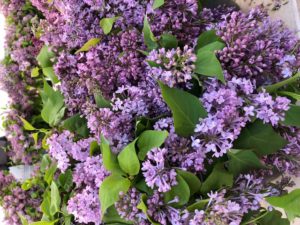
Top 3 Memorial Day Facts
To read more amazing Memorial Day facts, click here.
“Thank you South Carolina Sisters and Brothers! Like most Civil War topics, this holiday has a lot to do with memories lost and whitewashed. Even on mainstream websites, false credit is given to women’s history—that Memorial Day was somehow an idea created by a military officer’s wife.”
To read more, click here.
“Officially, as a national holiday, Memorial Day emerged in 1868 when General John A. Logan, commander-in-chief of the Grand Army of the Republic, the Union veterans organization, called on all former northern soldiers and their communities to conduct ceremonies and decorate graves of their dead comrades.”
To read more, click here.
What are your top 3 Memorial Day facts?